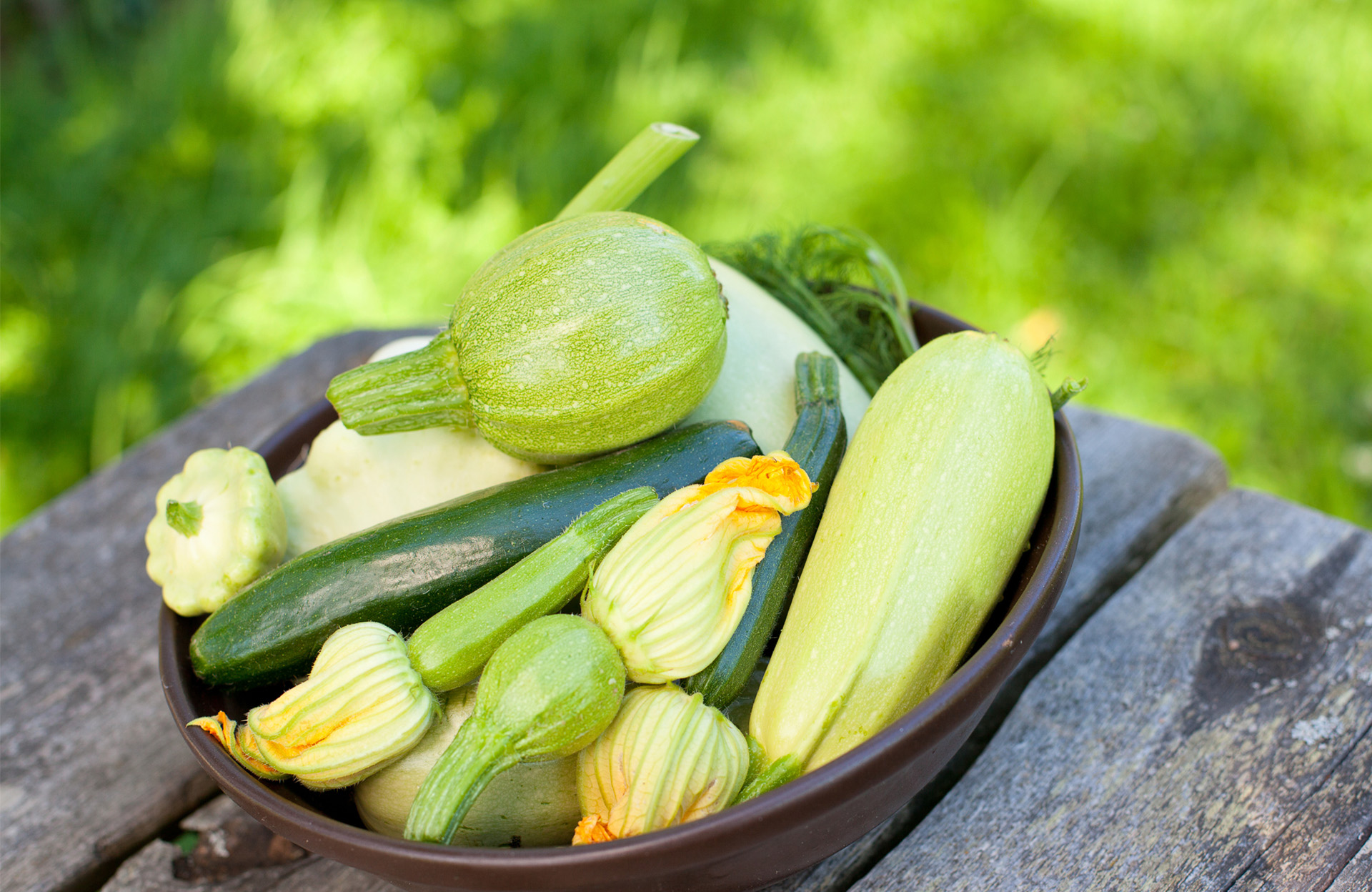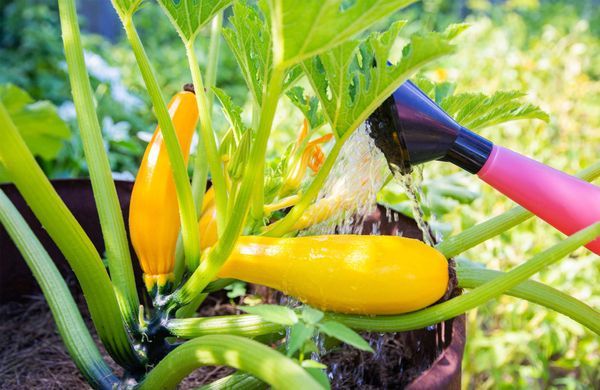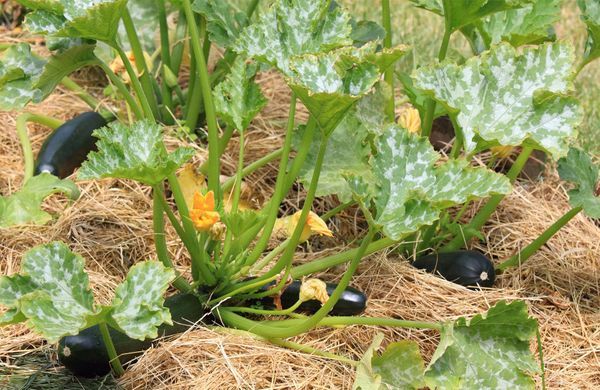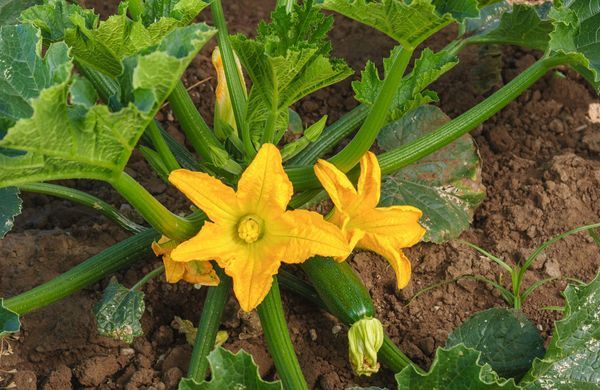Do you want zucchini, real vegetables of the sun? What if you grew it on your balcony or in your vegetable garden ! Their sweet and delicious flesh can be enjoyed both raw and cooked, from May to October. When and how to sow, transplant and plant them ? How to properly store them to guarantee abundant harvests throughout the summer? So many questions to ask ELLE. fr answers you.
When to sow pumpkin?
© Pavel Rodimov/iStock
From April, start sowing pumpkin seeds (Cucurbita pepo) in buckets filled with potting soil. Plant 2 to 3 seeds per cup (form a hole) about 2 cm deep to ensure young plants emerge. Place the cups in a bright room, with a temperature of 18 to 20 °C, under a frost-free frame or tunnel at 12 or 15 °C. Bring water regularly.
You can transplant them into the vegetable garden about 4 to 6 weeks later. (when the plant has produced 4 to 5 leaves), after the May frosts have passed and the ground has warmed up enough.
You can also sow the seeds in their final location from mid-May.
For zucchini lovers, you have the choice between round or elongated vegetables, early or late cultivation, different colors with more or less sweet flavors..
For rounds, try the ‘De Nice’ or ‘Tondo Di Piacenza’ variety. For colorful, grow the variety “Sunlight” or “Gold rush” with lemon yellow fruits; ‘Battle’ or ‘Lorea’ with white fruits; “Romanesco” or “Striato d’Italia” with striped fruit. Do not forget the varieties that produce good yields with delicious vegetables such as ‘Vertes des maraîchers’, ‘Black Beauty’ or ‘Diamant’ with more or less elongated fruits with green skin. The choice is wide to find zucchini with good and tasty flesh.
Also read: Golden rules, mistakes to avoid: an architect shares his secrets for designing your garden
When and how to plant a pumpkin?
©Irina Velichkina/iStock
Whether the plant is bought in a garden center or from home seedlings, planting takes place from May to June. to obtain good harvests from July to October. If you live in the south of France, the climate allows you to plant pumpkins outside in April. If you are cold, cover it with a protective veil if necessary.
Offer deeply tilled soil so that it is light, always moist without being wet and enriched with compost or decomposed manure because pumpkin is a delicious vegetable.
Where to plant a pumpkin plant?
Zucchini needs sun to grow and produce beautiful fruit. So don’t hesitate to plant your feet in full sun, in a place sheltered from the wind.
Allow space in the vegetable garden because you will need it leave at least 1 meter between each foot. For the running varieties, plan for the stems to creep or climb on a support in the vegetable garden, reaching up to 3 or 4 meters long. If you want to grow a zucchini plant in a pot on a balcony, a container on a terrace or a small container in an urban garden, choose a non-running variety or a dwarf variety.
What distance should be allowed between 2 pumpkins?
Considering the size of the pumpkin plant, leave between 1 and 2 meters to be able to move. Too tight, the plants will suffocate each other, fail to grow and exchange pests and diseases quickly.
Use companion plants to space out the pumpkin plants, without wasting space. Sow peas or plant chives, shallots or onions.
How to plant a pumpkin plant?
How to plant a pumpkin plant in the ground?
- Upstream, work the soil deeply and enrich it with mature compost;
- Every meter, dig a hole 20 cm deep;
- Place the root in the center, leaving the collar at ground level;
- Refill then pack;
- Water a lot and then mulch.
How to plant a pumpkin plant in a pot?
- Choose a pot of at least 30 cm in diameter with a hole in the bottom;
- Dip the cups in a bucket of water;
- Place a bed of gravel or clay balls in the bottom of the pot;
- Fill the pot with special vegetable plant soil;
- Place the root in the center of the pot;
- Fill the holes with potting soil;
- Pack well then water;
- Mulch on the surface to a thickness of 5 cm.
If you are growing running varieties, install a trellis to secure the stems.
How to combine zucchini stems?
©fotolinchen/iStock
The gardener often asks himself “what should and should not be planted next to a pumpkin?”. You can choose vegetables that will stay in place for a long time like peasTHE onions where the shallots (the last two will fight against cryptogamic diseases). You will also have the choice of quickly harvested vegetables such as radishof the aromatic plants with repulsive power as chive where the thymeand why not honey flowers which will attract pollinating insects such as worriesthere nasturtium or the borage. Another advantage of nasturtium is that it will attract aphids that will not invade the pumpkin plant.
How to water pumpkin plants?
©Henadzi Pechan/iStock
Once your feet are planted, add water once or twice a week, without soaking the soil and increasing during periods of great heat. Recycle water from washing fruits and vegetables to water the garden. Avoid wetting the foliage because stagnant water can be a source of powder, responsible for the presence of white spots on the foliage. Consider mulching the plants to reduce water consumption.
When growing in a pot, test the surface of the soil with your finger and water more often because the small surface area of soil tends to dry out faster.
How to take care of pumpkin plants?
©svehlik/iStock
Pumpkin is easy to grow but regular maintenance is required. Always keep the ground weeded because weeds tend to unnecessarily take up the nutrients and water that pumpkins need. Ho the earth so that it does not form a superficial crust that could retain water. This vegetable needs constant freshness, so be sure to let water flow to the roots. Another tip to maintain this moisture, wash your feet of planting. This layer of protection will also limit watering tasks.
Having many beautiful fruits on a stem of a running gourd, the size is recommended. To do this, pinch all the stems between your thumb and forefinger after they develop 6 to 8 leaves.
When and how to harvest pumpkin?
©kzenon/iStock
Pumpkin can be harvested between 50 and 90 days after planting., depending on the varieties and the region. You will therefore be able to choose these delicious vegetables from May until the first autumn frosts. If you mix the varieties and separate the planting periods, you will be able to pick pumpkins for 6 to 7 months, from early to late.
Harvest them small for soft, melting flesh. Large pumpkins tend to be stringy, decaying and less flavorful. Cut them into pieces and freeze them to cook winter soups.
Using a knife, cut the stem or twist it, carefully, the pumpkin on itself, so that it comes out of the stem.
Why aren’t my pumpkin plants producing pumpkin?
©GomezDavid/iStock
A pumpkin plant can produce both male and female flowers, not all of which produce fruit. The male flower is positioned at the end of a long, thin stem. The female flower is slightly swollen, a part that will develop and form the fruit.
Please note that the flowers, very popular with pollinating insects, can be eaten in fritters after they are harvested. To do this, prefer male flowers that will not produce fruit.
This is a sign that your plant is only developing male flowers and will not produce pumpkins.. This can be due to poor soil, not sufficiently enriched before planting.
Why are my pumpkins turning yellow?
©Akifyeva Svetlana/iStock
The pollination stage is very important to have beautiful pumpkins. The female flowers that will produce a pumpkin must have collected enough pollen from male flowers to be fertilized. If few insects move from male to female flowers, the pumpkin will grow, then turn yellow and rot.. When you plant pumpkin plants, also plant flowers that will attract insects such as bees, bumblebees or butterflies. You can cause this pollination yourself by putting the pollen of a male flower on the pistil of a female flower. Not so complicated!
Why are my pumpkin leaves turning white?
©Fokusiert-/iStock
This is powdery mildew, one of the most common diseases caused by fungi that invade the leaves of your pumpkin.. The white felt grows day by day to gradually cover the entire foot. Do not wait to treat this disease, which develops quickly when the days have temperatures between 23 and 26 °C or when the days are rainy. Quickly remove any diseased leaves and discard them. Do not throw them in the compost. To limit the appearance of powdery mildew, spray nettle fertilizer every 10 days after planting and water in the evening, without wetting the foliage. The fertilizer will strengthen the plant.









